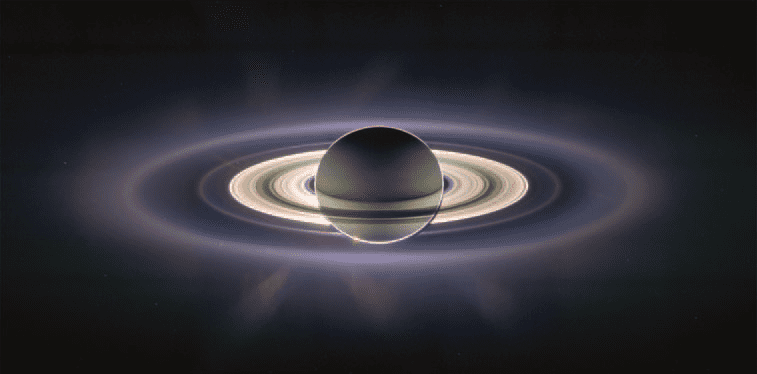The Cassini spacecraft may have burned up in Saturn’s atmosphere years ago, but its data is still being analyzed. Researchers have now completed a catalog of data from 41 solar occultations of Saturn’s rings (when the rings are in front of the Sun). The particles in the rings block part of sunlight, and this provides a whole set of information.
The size of the particles that make up the rings, the density of the rings, and the features within these spectacular structures can be estimated through these observations. The crucial measurement is called optical depth. During an occultation, the light of the background source (in this case the Sun) is scattered or absorbed by the particles in the rings. The amount of light is a direct measurement of optical depth.
Knowing the angle between the rings and Cassini provides a three-dimensional knowledge of the rings, and with that, properties can be worked out. Not just that – researchers see this data as crucial to be able to know how the rings came to be.
“For nearly two decades, NASA’s Cassini spacecraft shared the wonders of Saturn and its family of icy moons and signature rings, but we still don’t definitively know the origins of the ring system,” lead author Dr Stephanie Jarmak, a researcher in the SwRI Space Science Division, said in a statement. “Evidence indicates that the rings are relatively young and could have formed from the destruction of an icy satellite or a comet. However, to support any one origin theory, we need to have a good idea of the size of particles making up the rings.”
A backlit Saturn, as the planet occults the Sun. Image Credit: NASA/JPL-Caltech/SSI
Last month, a different team of researchers suggested that the rings were the result of an icy moon getting destroyed – an explanation that was able to explain another mystery of Saturn as well, related to a connection with Neptune. This data could help test that hypothesis further.
Cassini has recorded stellar occultations as well as solar occultations. Both sets are consistent with each other, and they provide important insights into the properties of the rings.
“Given the wavelength of the light coming from the Sun, these observations gave us insight into the smallest particle sizes with Saturn’s rings,” Jarmak said. “UVIS can detect dust particles at the micron level, helping us understand the origin, collisional activity and destruction of the ring particles within the system.”
The dataset is published in the journal Icarus.
Source Link: Spectacular New Images And Insights Into The Origin Of Saturn’s Rings
